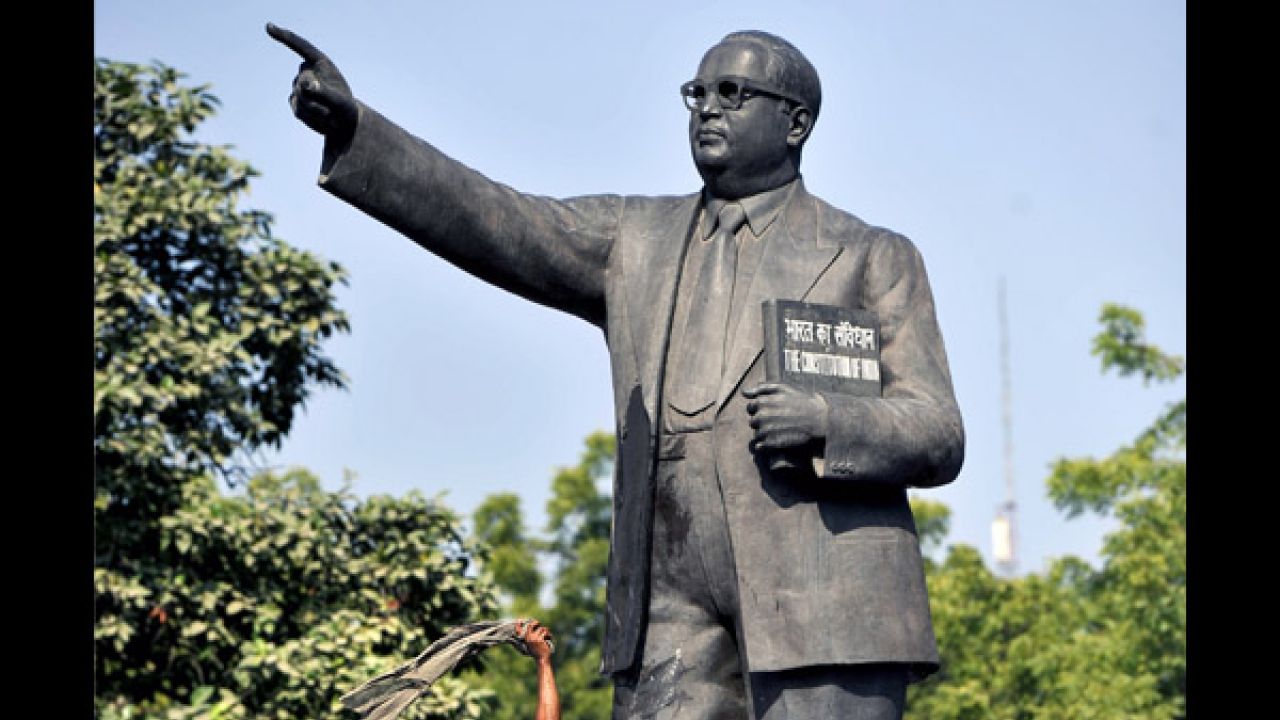Manish Kumar Rao
Keywords- Dalits, Post-Independence, Covid-19, Social Status, Political Status and Economic Status
Dalits, also known as ‘untouchables’ in India have been a topic of concern and criticism for many years. Despite India’s independence from British rule in 1947, Dalits still face discrimination and poverty in their daily lives. This article will examine the situation of Dalits in India after independence, highlighting the challenges they continue to face and the efforts made to address these issues.
Dalits, who make up approximately 16% of India’s population, have a long history of social and economic marginalization. In 1950, the Indian government passed the Scheduled Castes and Scheduled Tribes (Prevention of Atrocities) Act, which prohibited discrimination against Dalits in the workplace and ensured equal pay for equal work. Despite this legislation, the majority of Dalits continue to work in low-paying, manual labor jobs and face wage discrimination. The poverty rate among Dalits is 31.1% compared to the national average of 21.2% (National Sample Survey Office, 2019). In 2012, a study by the National Sample Survey Office found that the average wage of Dalit workers was 17% lower than that of non-Dalit workers. The lack of access to education and job skills training also contributes to the poor economic situation of Dalits. Furthermore, caste-based discrimination and prejudice in schools and educational institutions prevent many Dalits from pursuing education. This exclusion also affects their social and economic mobility, making it difficult for them to rise out of poverty. The literacy rate among Dalits is 73.5%, which is lower than the national average of 80.9% (Census of India, 2020). Illiteracy among Dalits in India is a result of several factors including poverty, caste-based discrimination, and lack of access to education. Dalits have been historically marginalized and excluded from the mainstream education system due to their low caste status. Many Dalits are forced to work as manual laborers and do not have the financial resources to afford education. In 2016, the Ministry of Social Justice and Empowerment reported that only 42% of Dalit households had at least one literate member, compared to 68% of non-Dalit households. The lack of educational opportunities for Dalits perpetuates the cycle of poverty, discrimination, and illiteracy, perpetuating their marginalization. One of the main reasons for the continued poverty and economic marginalization of Dalits is the persistent discrimination they face in their daily lives. In 2019, the unemployment rate among Dalits was 8.3%, which was higher than the national average of 6.7% (National Sample Survey Office, 2019). Dalits are often subject to violence and abuse, and face difficulties in accessing basic services such as education and healthcare. This discrimination has a significant impact on their ability to access employment and improve their livelihoods.
According to the (2011) census, the average per capita income of Dalits was INR 47,124, which was lower than the national average of INR 74,000. The lack of education and job skills training limits their employment opportunities, keeping them trapped in low-paying manual labor jobs. Dalits are also more likely to work in informal and seasonal jobs, which provide little security or stability. Dalits are heavily underrepresented in formal sector employment, accounting for only 6.5% of the total formal sector workforce in India (National Sample Survey Office, 2015) and only 6.6% of Dalits held professional or managerial positions, compared to the national average of 15.6% (Census of India, 2020). Dalits also face discrimination in accessing credit and other financial services. Only 10.7% of Dalit households had access to bank loans, compared to the national average of 21.6% (National Sample Survey Office, 2019). As a result, many Dalits are forced to rely on informal sources of credit, such as moneylenders, who charge high interest rates and put them into a vicious cycle of debt. According to a 2018 study by the Reserve Bank of India, only 18% of Dalit households had access to formal credit, compared to 33% of non-Dalit households. This lack of access to credit hinders their ability to start businesses and improve their economic situation. Land ownership is a critical factor for the economic empowerment and upliftment in India. However, due to decades of discrimination and exclusion, Dalits have limited access to land, which has been a major factor in their persistent poverty and marginalization. The land ownership rate among Dalits is only 2.2%, compared to the national average of 17.9%. This limits their ability to engage in agriculture, which is a critical source of income and livelihood for rural communities. Addressing the issue of land ownership and access is critical for improving the economic status of Dalits and breaking the cycle of poverty and exclusion.
The Indian government’s reservation policy has enabled Dalits to increase their representation in elected bodies, including parliament and state legislative assemblies. Despite these gains, Dalits continue to face significant challenges in the political arena. Their representation in elected bodies remains limited, and they are often marginalized within political parties. Only 3.5% of Dalits held political office, compared to the national average of 6.3% (India, 2020). Additionally, Dalits who hold political office are often subject to violence and intimidation, making it difficult for them to effectively represent their constituents. The majority of Dalits continue to live in segregated communities and face a lack of access to the basic services such as clean water, sanitation, and healthcare. It leads to poor health and hygiene conditions; this increases their vulnerability to disease and illness, and can result in higher rates of morbidity and mortality. Dalits accounted for 56% of all manual scavengers in India (National Commission for Safai Karamcharis, 2020). The extreme poverty and lack of access to education force them into this hazardous and stigmatized work. The Indian government has launched various schemes to eradicate manual scavenging, but their implementation remains inadequate, and more needs to be done to empower and uplift the Dalit community and end this practice once and for all.
The COVID-19 pandemic has had a devastating impact on Dalits in India. Dalits, who are among the most economically vulnerable communities, have been hit particularly hard by the pandemic. The sudden and widespread loss of jobs and income has resulted in increased poverty, hunger, and homelessness among Dalits. The closure of schools and the suspension of non-essential services has also disrupted access to education and healthcare for many Dalits. Additionally, the pandemic has intensified existing social and economic inequalities, with Dalits being disproportionately affected due to their low socio-economic status. Furthermore, the lack of access to information and healthcare facilities has made it difficult for Dalits to protect themselves from the virus. The government’s response to the pandemic has also been criticized for not adequately addressing the specific needs of Dalits, leaving many of them without support and assistance. In conclusion, the COVID-19 pandemic has highlighted the persistent economic and social disparities faced by Dalits and the urgent need for inclusive and equitable policies to address their needs.
The government has implemented various programs aimed at providing job skills training and credit to Dalits, as well as building infrastructure in Dalit communities. For example, the National Scheduled Castes Finance and Development Corporation was established in 1989 to provide credit to Dalits for income-generating activities. The Indian government has also implemented reservations in government jobs and educational institutions for Dalits and other marginalized communities. This has helped to improve their access to employment and educational opportunities. In addition, the Ministry of Social Justice and Empowerment implements various programs aimed at improving the educational and employment opportunities of Dalits. Moreover, the Indian government has implemented various economic upliftment programs aimed at improving the economic conditions of Dalits, such as the Mahatma Gandhi National Rural Employment Guarantee Act (MGNREGA) and the National Rural Livelihoods Mission (NRLM). These programs provide employment opportunities and access to credit for Dalits in rural areas. Another initiative is the establishment of the National Commission for Scheduled Castes in 2004, which was tasked with monitoring the implementation of policies and programs aimed at improving the status of Dalits. This commission has been instrumental in highlighting the issues faced by Dalits and advocating for their rights. Despite efforts by the Indian government to improve the economic situation of Dalits, their living conditions have not improved significantly since independence.
In conclusion, Dalits have faced immense economic challenges in India even after independence in 1947. Despite various efforts by the government to improve the economic condition of Dalits, including affirmative action policies and reservation in education and government jobs, the socio-economic status of Dalits remains low in comparison to other communities in India. They still face discrimination in accessing employment, education, and credit facilities. The majority of Dalits are still engaged in low-paying manual labor, and their average income and wealth are significantly lower than the national average. Additionally, the COVID-19 pandemic has further exacerbated their economic hardship, leading to job losses and wage reductions. To address the persistent economic disparities faced by Dalits, a multi-pronged approach is needed that focuses on addressing both the root causes of poverty and discrimination as well as providing immediate relief and support. This can include measures such as increasing access to education and job training programs, improving credit facilities, and enforcing laws that prohibit discrimination in the workplace. In sum, the economic empowerment of Dalits is essential for the overall development of India and achieving a more equitable society.
~
References
(2011). Ministry of Statistics and Programme Implementation, Government of India, .
Census of India. (2020). Ministry of Home Affairs, Government of India,.
Development, M. o. (2016). Government of India, .
India, E. C. (2020). ,Ministry of Law and Justice, Government of India,.
National Commission for Safai Karamcharis. (2020). Ministry of Social Justice and Empowerment, Government of India, .
National Sample Survey Office. ( 2015). Ministry of Statistics and Programme Implementation, Government of India,.
National Sample Survey Office. (2019). Ministry of Statistics and Programme Implementation, Government of India.
~~~
Manish Kumar Rao is a B.Tech from MMMUT, Gorakhpur, and works as a Data Analyst at an investment securities firm.










